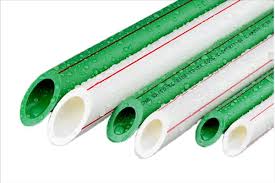Nov . 07, 2024 17:14 Back to list
Top Manufacturers of PPR Hot Water Pipe Insulation Solutions in the Industry
The Importance of PPR Hot Water Pipe Insulation A Manufacturer’s Perspective
In today’s fast-paced construction and plumbing industries, the focus on energy efficiency and sustainability is more pronounced than ever. One of the essential components that contribute to these goals is high-quality insulation for piping systems. When it comes to hot water applications, Polypropylene Random Copolymer (PPR) pipes have gained significant popularity due to their excellent thermal resistance, adaptability, and durability. However, what often goes underestimated is the role of insulation in enhancing the performance of PPR systems. In this article, we will explore the importance of PPR hot water pipe insulation and how manufacturers are rising to the challenge of providing effective solutions.
Understanding PPR Pipes
Polypropylene Random Copolymer pipes are known for their lightweight nature, excellent corrosion resistance, and ability to withstand high temperatures. This makes them an ideal choice for hot water applications in residential, commercial, and industrial settings. However, just like any other piping material, PPR pipes can experience heat loss, which can lead to increased energy consumption and decreased system efficiency.
This is where insulation comes into play. Properly insulating PPR hot water pipes not only maintains the desired temperature of the water but also minimizes energy waste. Insulation is crucial for preventing the heat loss that occurs during the transportation of hot water, which can significantly improve the overall efficiency of heating systems.
The Role of Insulation
The primary functions of insulation for PPR hot water pipes are to reduce heat loss and improve energy efficiency. Additionally, insulation protects the pipes from environmental factors such as moisture and temperature fluctuations, which can lead to condensation and potentially result in mold growth or structural damage.
Furthermore, adequate insulation can enhance the longevity of piping systems by shielding them from mechanical stresses and external impacts. By providing a regulated temperature around the pipes, insulation can prevent thermal expansion and contraction, which can lead to premature wear and tear.
Choosing the Right Insulation Material
Selecting the appropriate insulation material is crucial for maximizing the benefits of insulating PPR pipes. Common insulation materials include mineral wool, foam, fiberglass, and polyethylene. Each material has its own set of advantages and disadvantages, making it essential for manufacturers to provide a wide array of options tailored to specific needs.
ppr hot water pipe insulation manufacturers

For instance, polyethylene foam insulation is lightweight, easy to install, and offers excellent thermal resistance, making it a popular choice for residential applications. On the other hand, fiberglass insulation can provide better acoustic properties and is often preferred in commercial and industrial settings.
Innovations in Insulation Technology
In recent years, manufacturers of PPR hot water pipe insulation have been introducing innovative solutions that enhance thermal performance while reducing environmental impact. Advanced manufacturing techniques and the use of eco-friendly materials are becoming more prevalent in the industry.
Closed-cell foam insulation is gaining popularity due to its lower thermal conductivity, which significantly reduces heat loss. Moreover, reflective insulation solutions, which utilize reflective barriers to reflect radiant heat, are becoming more mainstream, particularly in regions with extreme temperature fluctuations.
Increased Demand and Market Growth
The growing awareness of energy efficiency and environmental sustainability is driving the demand for insulated piping systems. As more builders, contractors, and homeowners prioritize energy-saving solutions, manufacturers are expanding their product lines to include a greater variety of insulation options.
This market growth is not only beneficial for manufacturers but also for consumers, as they have access to more efficient products that can lead to substantial energy savings and lower utility bills in the long run.
Conclusion
In conclusion, PPR hot water pipe insulation plays a critical role in ensuring the efficiency and longevity of piping systems in various applications. As manufacturers continue to innovate and expand their product offerings, the options available for insulating these systems will only improve. Choosing the right insulation not only contributes to energy savings but also promotes sustainability and reduces environmental impact. As we move towards a more energy-conscious future, the importance of insulating PPR hot water pipes cannot be overstated. Thus, stakeholders in the construction and plumbing industries should prioritize the integration of effective insulation solutions to achieve optimal performance and efficiency.
-
High-Quality PVC Borehole Pipes Durable & Versatile Pipe Solutions
NewsJul.08,2025
-
High-Quality PVC Perforated Pipes for Efficient Drainage Leading Manufacturers & Factories
NewsJul.08,2025
-
High-Quality PVC Borehole Pipes Durable Pipe Solutions by Leading Manufacturer
NewsJul.08,2025
-
High-Quality PVC Borehole Pipes Reliable PVC Pipe Manufacturer Solutions
NewsJul.07,2025
-
High-Quality UPVC Drain Pipes Durable HDPE & Drain Pipe Solutions
NewsJul.07,2025
-
High-Quality Conduit Pipes & HDPE Conduit Fittings Manufacturer Reliable Factory Supply
NewsJul.06,2025

